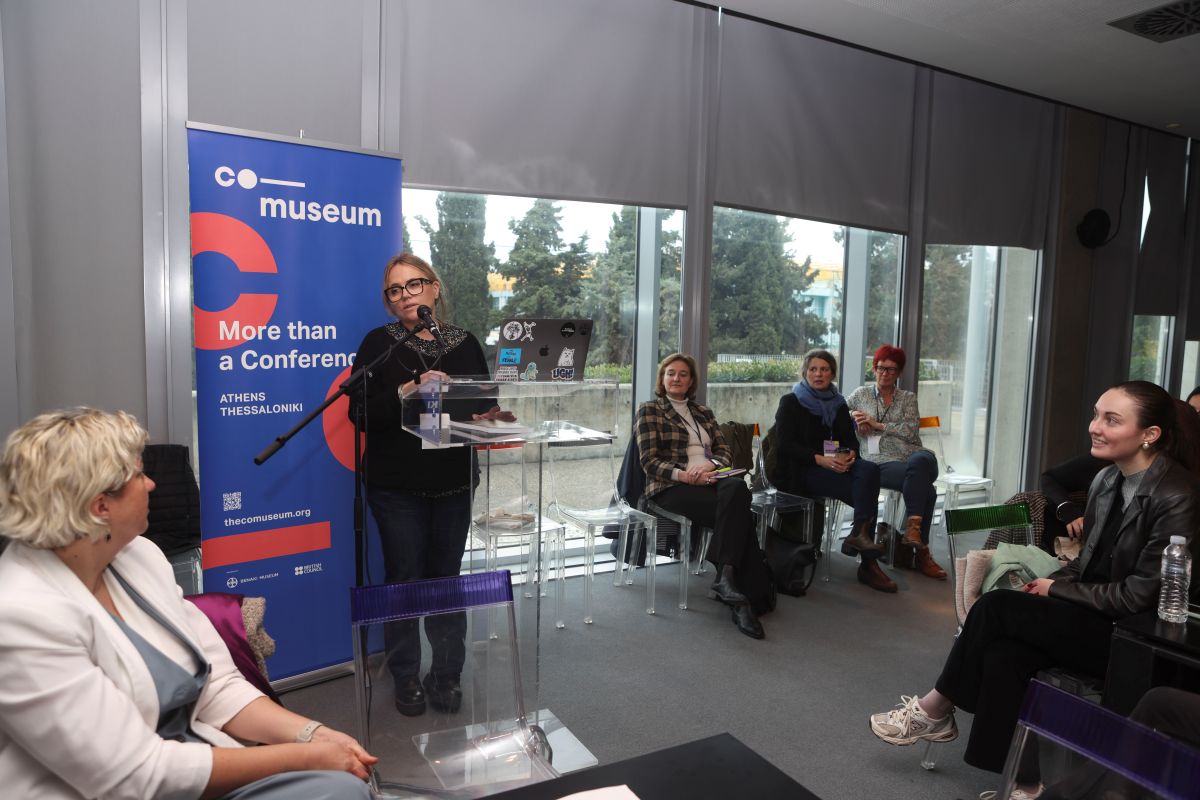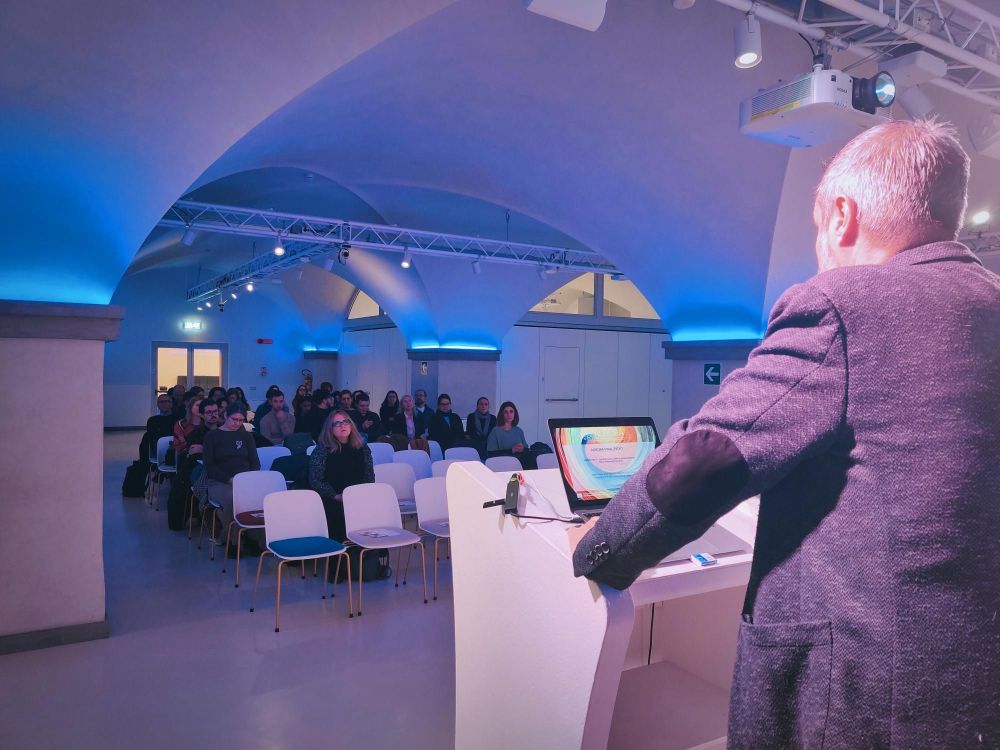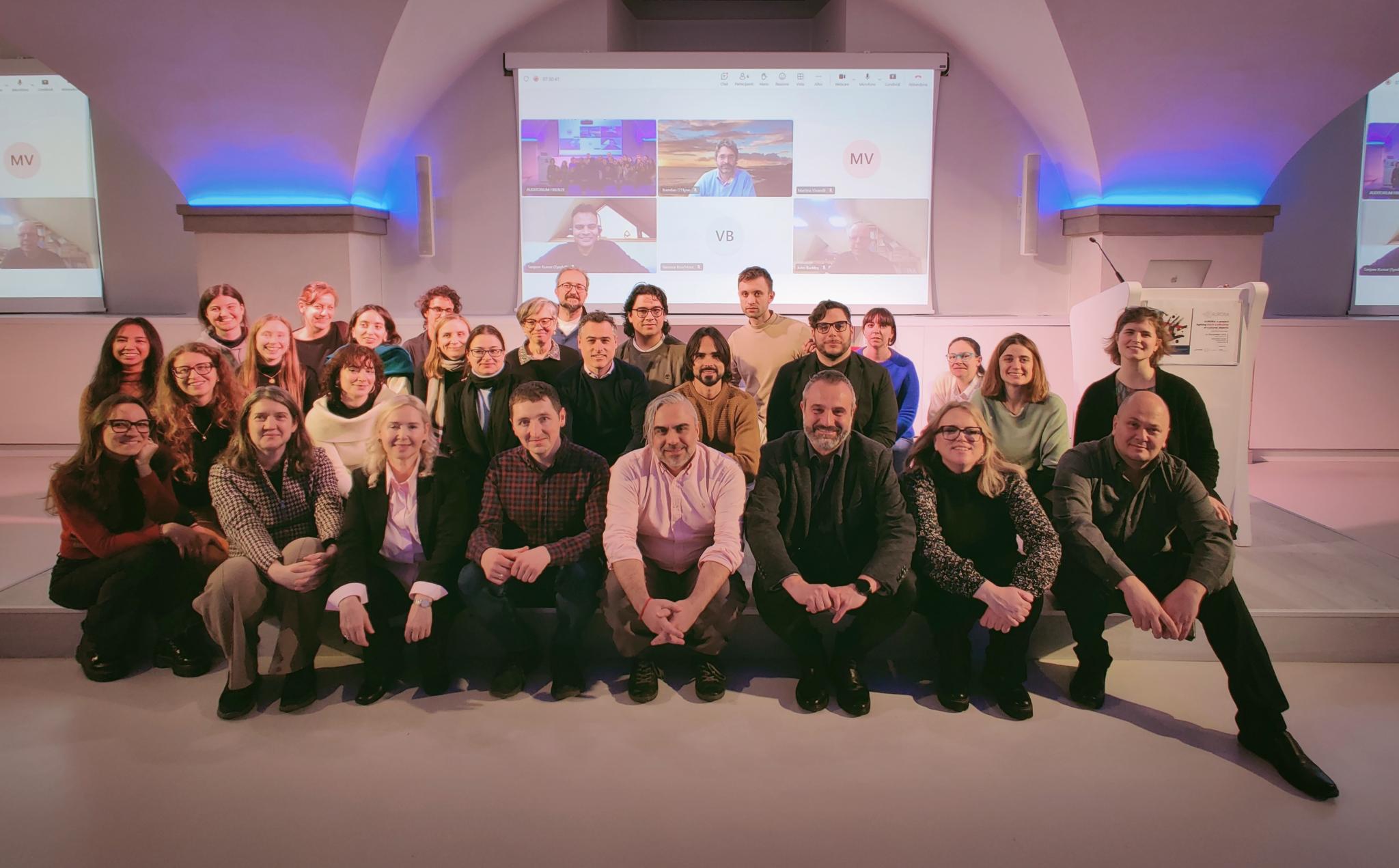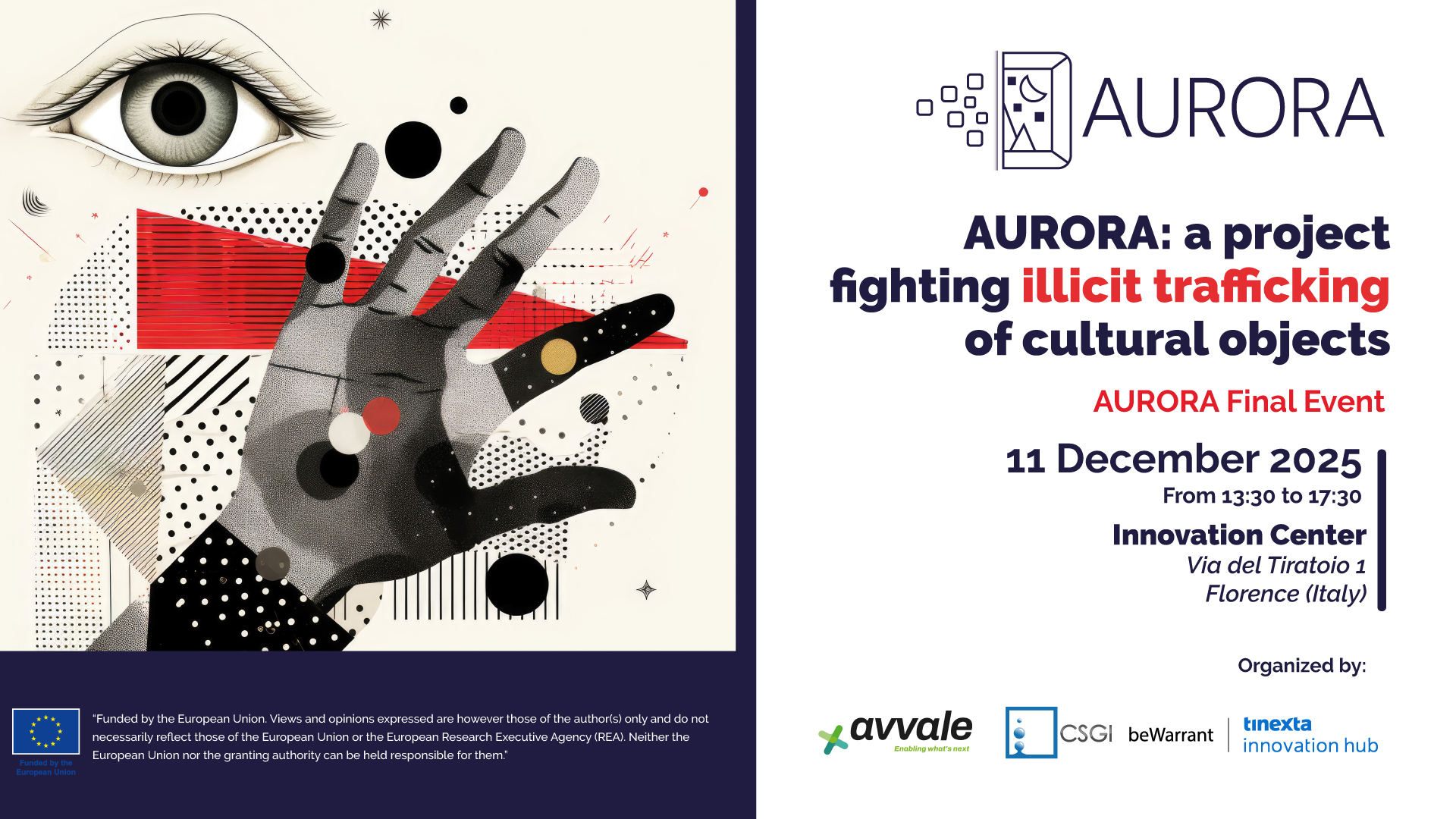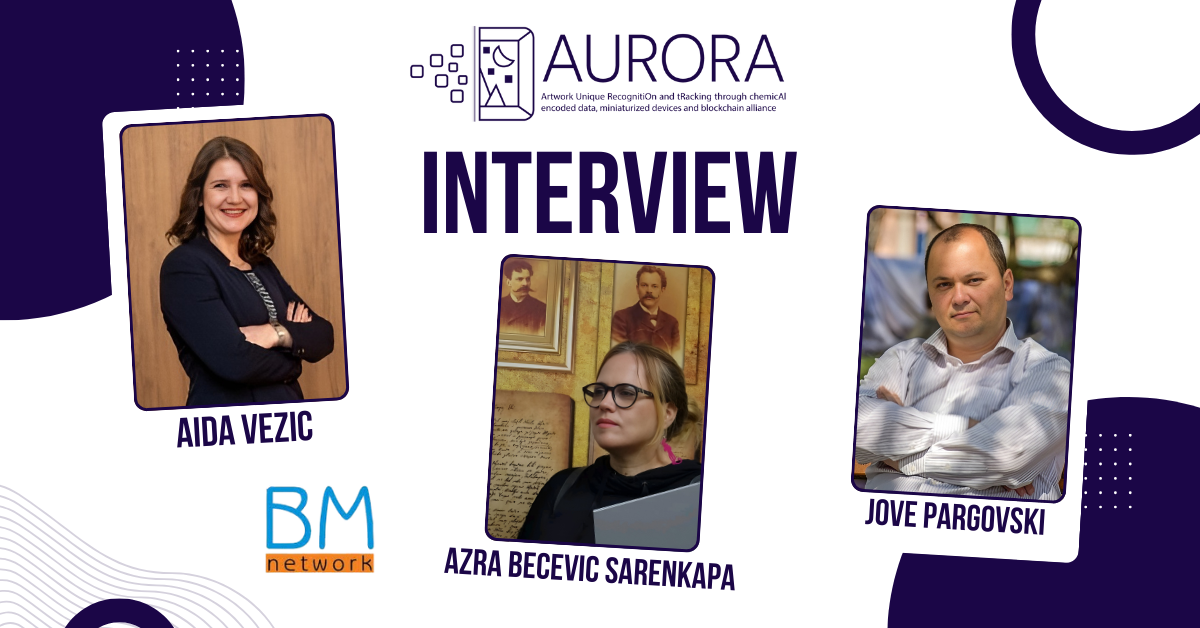
AURORA project talked to three representatives of the Balkan Museum Network (BMN): Aida Vezic – Secretary General, Azra Becevic Sarankapa – member of the BMN Steering Board and Senior Conservator at the National Museum of Bosnia and Herzegovina and Jove Pargovski, working with documentation and digitization of cultural heritage at the National Institution Institute and museum Bitola (North Macedonia). We asked them a few questions about AURORA, its impact on the heritage institutions as beneficiaries of AURORA technologies, potential risks and other topics.
Thank you for joining us today in this conversation. BMN is truly a unique organization and I am curious to know how the Aurora project fits within the work performed by the Balkan Museum Network. How does it strengthen the role BMN is performing among the heritage community?
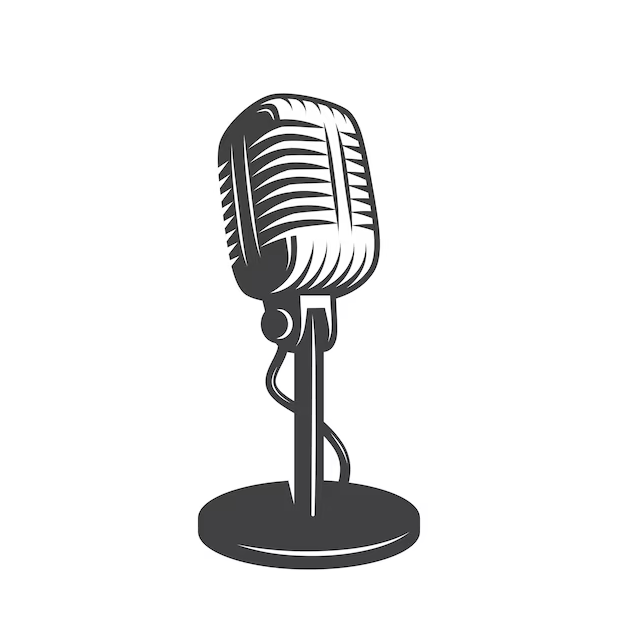
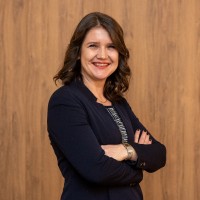
The Balkan Museum Network (BMN) is an association based in Bosnia and Herzegovina, with more than 250 members (museums and heritage professionals) working in all the countries of the Southeast European region. BMN as a platform primarily creates opportunities for member organizations and individuals to connect and share information and knowledge.
We are always the happiest when we see members benefiting from the support they can receive from active networking and sharing. Being part of the AURORA project allows BMN to have access to cutting-edge research with a very relevant impact. We are happy to be part of the consortium contributing to solving one of the pressing issues for the heritage sector: finding answers to how to prevent illicit trafficking of cultural property. Every museum recognizes the security threats to cultural heritage, both museum collections and other sources, thus they are very much curious to learn more about which technologies could reduce the threat of theft and illicit trafficking.
By taking part in the AURORA project BMN can disseminate results to our members and in the other direction also feed the information about the problems and needs from the ground to researchers and technology providers.
Azra, what specific results of the Aurora project will be useful to you as a conservator and other museum professionals that protect different cultural heritage objects from their deterioration?

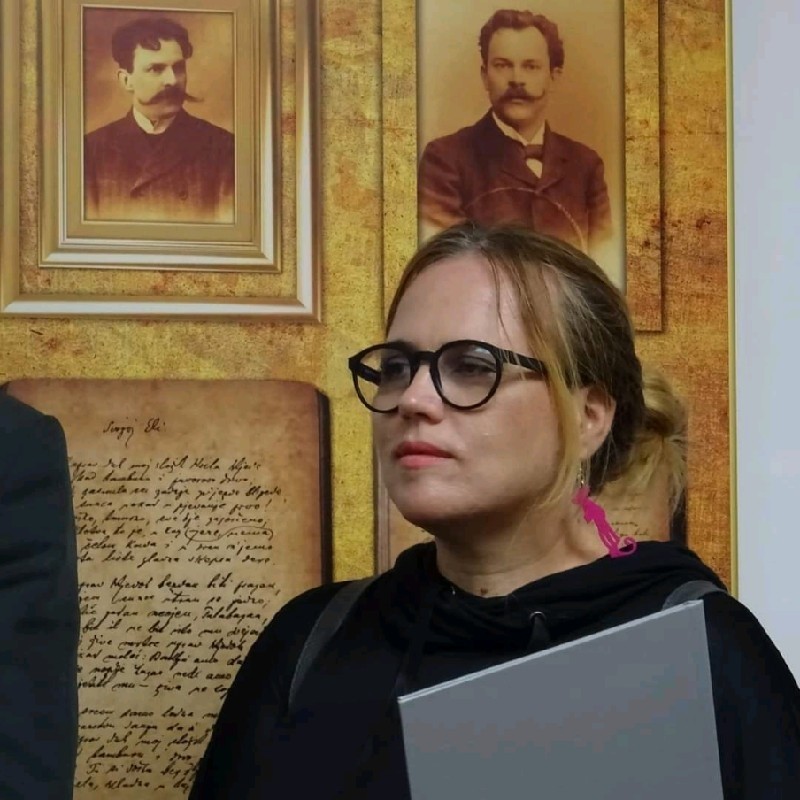
As a conservator working at the National Museum of Bosnia and Herzegovina I am coming across many different issues when it comes to marking and labeling objects. I am sure that many conservators from all around the world have similar problems. Main task of every museum, when it comes to the museum objects is documentation which apart from a good description, photographs and measurements, also consist of finding a way of labeling the objects, in the safest possible manner.
Depending on the type of material from which objects is made, as well as its dimensions and state, conservators are choosing best possible option for marking objects, which is most of the time visible, but mostly in hidden places at the back, on already determined placed. Like everything else what is done on objects, labeling should be reversible. Investigating different types of chemical markers, and different protection layers, will be beneficial for conservators, as well as for the AURORA project.
Namely, new “green” materials which are suggested as protection layer, could be used in conservation, as protection layers, as well as adhesives. Use of XRF imaging will also be beneficial in many ways, since it gives more information about objects itself, but is also costly.
Thank you Azra. Jove, your specialties are documentation and digitization of cultural heritage and you work at the National Institution Institute and Museum Bitola, how can AURORA technologies facilitate documentation and digitization and help you in your work?

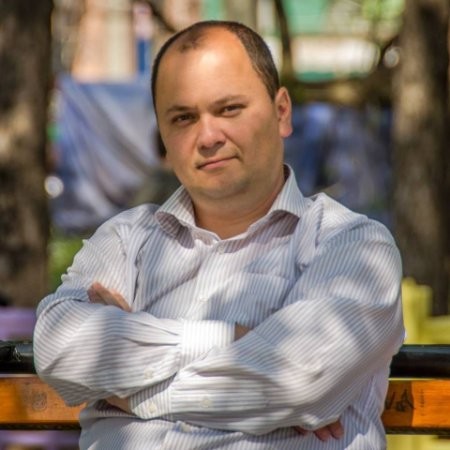
AURORA is a project that aims to fight illegal trade in cultural heritage through the use of modern technologies. Starting from the fact that there are not so many markets for well-documented stolen art, one of the tasks of the project is to help in better prevention, by facilitating and modernizing the processes of documentation and inventorization within the museums.
One of the technologies that is being developed in AURORA is an invisible marker that under certain conditions can be easily read by a mobile phone and application.
Inventory or accession numbers are the connection between museum objects and documents related to them. They must therefore be physically attached or applied to the objects. These numbers should be easy to locate without unnecessary handling of the object and at the same time without defacing any aspect of the object likely to be displayed or photographed. To apply these numbers to the objects, different methods and materials are used that do not cause permanent damage to the objects. For example for marking hard, non-porous surfaces, the number is written with drawing ink, on paper museum objects (prints, photos) soft pencil is used, etc.
The idea in AURORA is to replace or augment this traditional method, by applying a number, or a mark with invisible ink, visible under certain lighting conditions, and with the possibility of being able to be read “recognized” using a mobile phone and application.
In addition to the primary purpose, which is greater security protection of objects from theft and forgery, this technology will also help in the improved process of inventorization and documentation of museum collections.
Going back to you Aida, how does the Balkan Museum Network communicate with the broader heritage sector in Europe and how can we motivate other heritage actors to get involved?


BMN is a proud member of the Network of European Heritage Organisations (NEMO) which is the voice of European museums and very much active among the European policymakers. BMN’s work is amplified through NEMO by participating in annual museum conferences and different training activities (study visits, webinars, mentoring and similar).
Also, by partnering with organizations such as Cultural Heritage without Borders (CHwB) Bosnia and Herzegovina, CHwB Albania and CHwB Kosovo that train stakeholders in emergency response to cultural heritage and increase the preparedness of all actors to safeguard cultural heritage through the work performed by the B+CARE Cultural Emergency Hub we reach out to stakeholders in the fields that are closely connected to illicit trafficking. Our member museums are managing archeological sites (for example NI Institute and Museum Bitola where Jove works is managing a Roman archeological site Heraclea Lyncestis) which are at high risk of illicit trafficking.
All our activities improve the protection, promotion and interpretation of cultural heritage that has to be protected for future generations.
It is always worth considering the risks, Azra, what potential risks do you see related to implementation of AURORA technologies and tools and how can we mitigate them?


In my opinion the main risk or maybe challenge, is to determine position of the labeling objects or taking XRF imaging, since both techniques are “invisible” we should know exactly where an object is marked, or taken XRF image, so we can reduce the level of handling of the objects. As we all should know, handling, especially if it is not correct, can cause big problems with the objects and their state of preservation.
Another type of risk is how to apply labels with chemical markers, so it is visible, unique and recognizable, in the future. Also, we should think about applying standards, along with one which we already have (ICOM standards for labeling museum objects) how and where to mark the objects, but also it is important to teach / spread knowledge about that as well as safe handling procedures to the costumes, and other personnel which is handling museum object but do not have previous knowledge about it.
Jove, you have been looking into European public policy regarding illicit trafficking, could you please tell us what are policy implications of Aurora technologies on the European level?


It is a fact that the illegal trade in cultural heritage is constantly evolving and changing with the technological innovations and new realities in the world. For example, the social networks and the Internet today play a very important role in this segment. For an effective fight against illegal trade in cultural heritage, it is necessary for governmental institutions to be in step with the criminal organizations, and to implement and use new modern tools such as those that are being developed in the AURORA project. Yet to implement this, there is a need for changes in the policies and legal regulations at the European level.
Thank you all for this conversation. I wish you successful continued cooperation within AURORA and other projects that benefit heritage organisations.

Thank you for reading this interview. If you’re interested in knowing more about AURORA Project browse this website and/or follow us on our Social Media to be updated about new developments and events!
